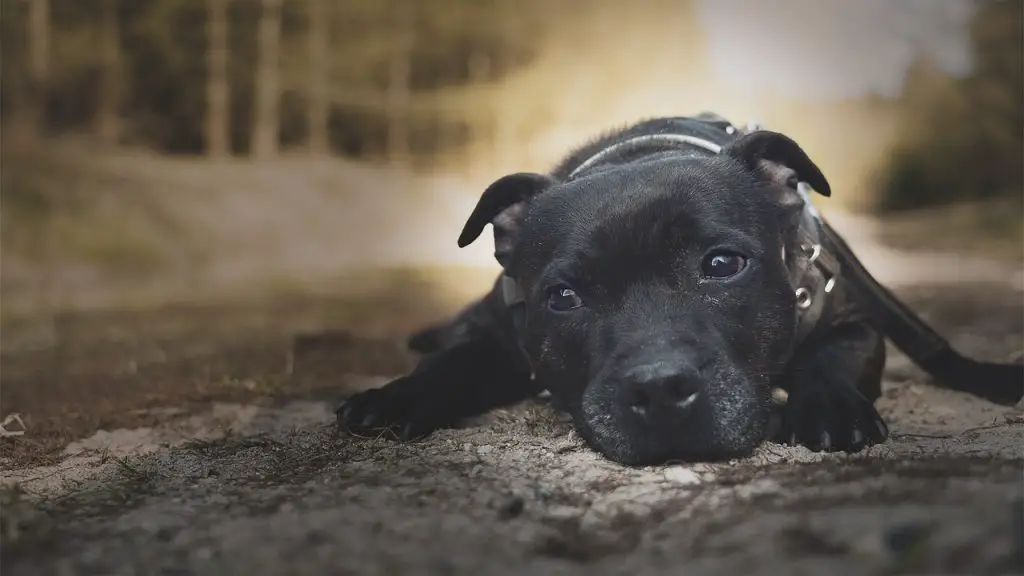It can be alarming to see mucus in your dog’s poop, especially after they have eaten a bone. While bones are often given as treats or chews, they can sometimes cause digestive irritation and concerning stool changes.
We outline the possible causes of mucus in a dog’s poop after eating a bone, what you can do at home, and when to seek veterinary help.
Table of Contents
Mucus in Dog Poop After Eating A Bone — Why It Happens
Mucus in dog poop after eating a bone often occurs because the digestive system is irritated. When bones splinter, scrape, or pass through the intestines, the lining may produce extra mucus for protection. Other times, the fatty content of marrow or difficulty digesting the bone can upset the gut.
Infections, blockages, or underlying conditions can also play a role, making this a symptom owners should never ignore.

Mucus in Dog Poop After Eating A Bone: Common Causes
Intestinal Irritation
Bones can irritate the lining of the intestines, especially if they are sharp or splintered. This irritation prompts the intestines to produce mucus as a protective response.
Owners may notice loose stools with strands or clumps of jelly-like mucus. The dog may strain during bowel movements or appear uncomfortable.
While mild irritation may pass, repeated exposure can damage the gut and increase the risk of complications.
Read more: Mucus in Dog Poop and Pancreatitis (Why it happens)
Constipation from Bone Fragments
Chewing and swallowing bone fragments can cause stool to become dry and hard. The colon then produces mucus to help ease the passage of this rough material.
You may see hard stool coated with mucus, sometimes followed by softer stool. Dogs may hunch, strain, or even cry when trying to defecate.
Constipation caused by bone fragments can worsen quickly, and in some cases, fragments may form a blockage.
Gastroenteritis
Eating bones can sometimes trigger inflammation of the stomach and intestines, especially if the bone carries bacteria or is difficult to digest.
This condition often results in diarrhea with mucus, sometimes mixed with a small amount of blood. Dogs may also vomit, lose appetite, or show signs of abdominal discomfort.
Gastroenteritis from bones can resolve with care, but it can also become severe and lead to dehydration.
Obstruction in the Digestive Tract
When bone fragments collect in the intestines, they may form a blockage. The body often responds by producing excessive mucus, which may appear in stool before bowel movements stop altogether.
Signs include repeated straining, very little stool passed, abdominal swelling, and lethargy. In some cases, vomiting accompanies the mucus.
An obstruction is a medical emergency and requires immediate veterinary treatment.
Anal Gland Issues
Sometimes mucus after eating bones may not come from the intestines but rather from anal glands. Hard stools caused by bone fragments can put pressure on the glands, leading to irritation or incomplete emptying.
Dogs may scoot, lick excessively at their hind end, or show discomfort when sitting. The stool may carry a slimy coating of mucus from the glands.
Anal gland irritation may worsen without care and sometimes needs veterinary expression or treatment.
Pancreatitis
Rich, fatty marrow inside bones can trigger pancreatitis in sensitive dogs. This condition inflames the pancreas, disturbing normal digestion and causing mucus in stool.
Along with mucus, dogs may vomit, lose their appetite, or appear in severe abdominal pain. Lethargy is also common.
Pancreatitis can be life-threatening and needs urgent veterinary attention.
What to Do If Your Dog Has Mucus in Their Poop After Eating A Bone
If mucus appears only once and the dog is otherwise normal, monitoring at home may be reasonable. Offer plenty of fresh water and a bland diet, such as plain boiled chicken and rice, to rest the digestive system.
Avoid giving bones in the meantime, since additional fragments may worsen irritation. Instead, consider softer chews or vet-approved dental treats.
If your dog seems constipated, gentle exercise and hydration may help encourage bowel movements. Some owners also find plain pumpkin puree can aid digestion, but only in small, safe amounts.
Always watch closely for changes. If your dog becomes uncomfortable, continues to pass mucus, or refuses food, the situation may be more serious.
When to Call or Visit Your Vet
Seek veterinary help right away if your dog shows any signs of severe discomfort, repeated vomiting, or straining without producing stool.
Blood mixed with mucus, black tarry stools, or sudden lethargy should also be treated as emergencies.
If mucus in the stool continues for more than a day or two after eating bones, or if your dog refuses food and water, it is safest to schedule a veterinary exam.
In the case of possible obstruction or pancreatitis, waiting too long can make recovery more difficult.
Read more: Mucus in Dog Poop After Changing Food (When to worry)
Key Takeaway
Mucus in dog poop after eating bone is often a sign that the digestive system is struggling. While mild irritation may resolve with rest and diet changes, bones can also cause serious problems like blockages or pancreatitis.
Owners should be cautious when offering bones, watch for any concerning changes, and never hesitate to seek veterinary help if symptoms worsen. Quick action can make all the difference in keeping a dog safe and healthy.
